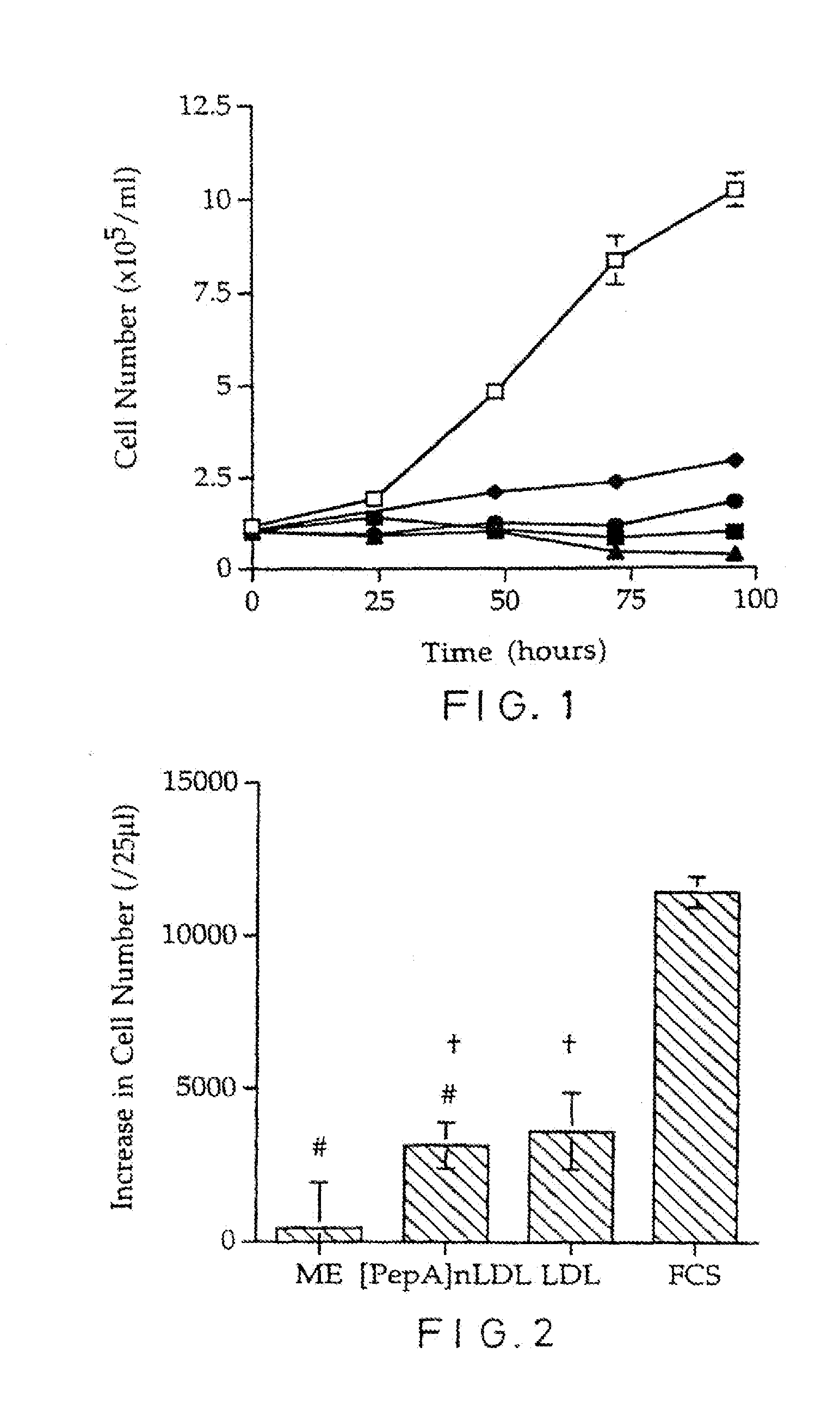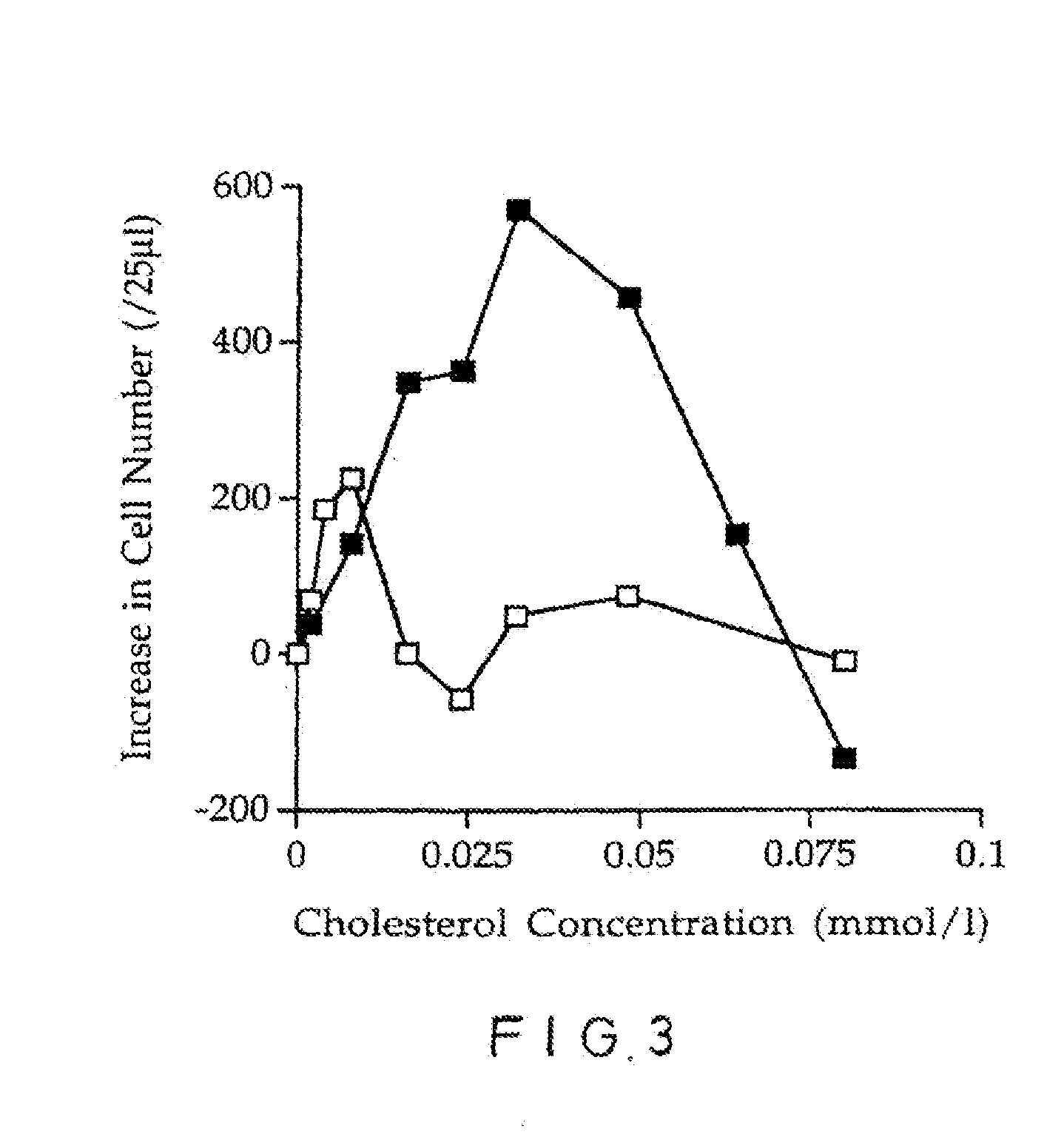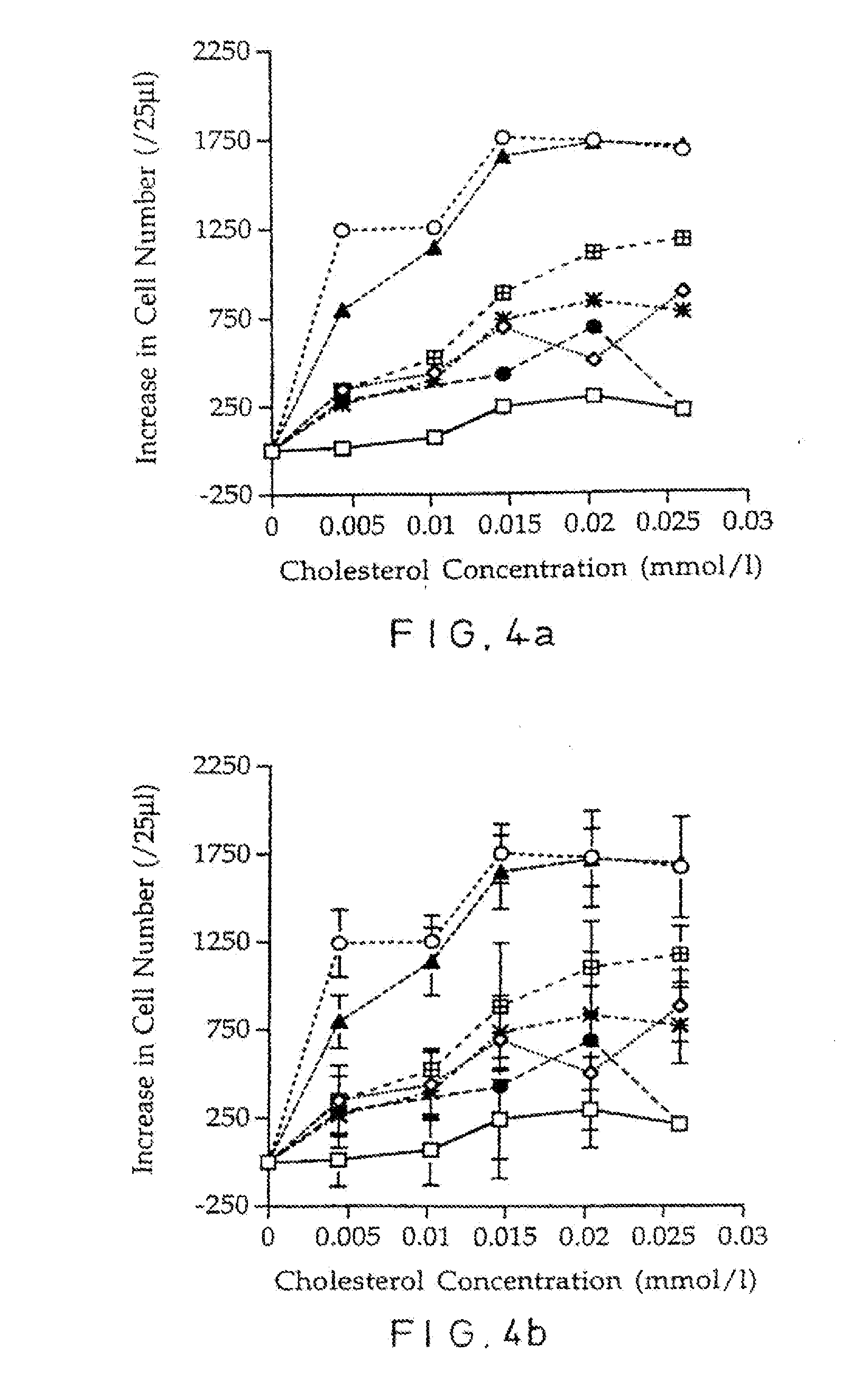Non-naturally occurring lipoprotein particle
a non-naturally occurring, low-density technology, applied in the field of lipoprotein particles, can solve the problems of particle lack of receptor competency, low yield, unstable isolation of naturally occurring ldl, etc., and achieve the effect of no deleterious effect on cell viability
- Summary
- Abstract
- Description
- Claims
- Application Information
AI Technical Summary
Benefits of technology
Problems solved by technology
Method used
Image
Examples
example 2
Materials and Methods
[0153]Materials, appropriate preparations of nLDL particles, and analysis of cholesterol content follow the outlines as for Example 1, above.
Photon Correlation Spectroscopy
[0154]Particle size analysis was carried out using photon correlation spectroscopy (Zetasizer® Model 4, Malvern Instruments, Malvern, (UK). Before analysis samples were diluted with Tris-HCl buffer (0.01M) and filtered (0.2 μm). Sizing measurements were carried out at a fixed angle of 90° to the incident beam. The correlator was operated in parallel mode to allow for more accurate size distribution measurements. The cumulants method of analysis was used to calculate the mean sample size weighted according to the intensity of scattered light (z-average diameter). Since this diameter is weighted strongly on favour of large particles, Rayleigh theory was used to convert intensity distributions into number distributions12. The viscosity and refractive index values of pure water were used in the si...
example 3
Materials and Methods
[0170]B16 cells were obtained from the Dermatology Department of the Western Infirmary, Glasgow, United Kingdom.
[0171]Other materials, preparation of nLDL particles and analysis of cholesterol content follow the outlines as for Examples 1 and 2, above.
Incorporation of 14C-Cholesteryl Oleate
[0172]The required quantity of 14C-cholesteryl oleate (0.5 μCi / mmol CO, supplied dissolved in toluene) was mixed if required with ten times its volume of DMSO prior to addition to stirred nLDL heated at 55° C. in a water bath. After incubation for 5 hours the mixture was passed down a Sephadex G-25M gel exclusion chromatography column (bed volume 10 ml) eluted with PBS. Fractions (1 ml) were collected their absorbance (300 nm) and 14C-cholesteryl oleate activity measured. Labelled preparations were filter sterilised (0.2 μm) and stored at 4° C. under N2 before use.
[0173]B16 cells were maintained in RPMI 1640 medium supplemented with 10% v / v FCS incubated at 37° C...
example 4
Materials and Methods
[0180]Materials, preparation of microemulsion and of nLDL particles, and analysis of cholesterol content are as for Example 1, above with the exception that B16 cells are used in place of U937 cells.
Fluorescent Labelling of Microemulsion, nLDL.
[0181]LDL, nLDL and microemulsion were labelled with DiO by a method modified from Stephan and Yuracheck18 (as described hereinbelow). A fluorescent probe stock solution (3 mg / 5 ml in DMSO) was added to LDL solution at a concentration of 300 μg / mg LDL protein or to microemulsion or nLDL suspension containing an equivalent concentration of cholesterol (1 mmol / l) in an identical volume. The lipid DiO mixture was incubated in the dark at 37° C. for five hours then passed down a Sephadex G-25M column (bed volume 9.1 ml) eluted with PBS. The resulting labelled nLDL were filter sterilised (0.2 μm) and stored at 4° C. under N2 before use. The DiO concentration of the microemulsions was determined using a fluorescence spectrophoto...
PUM
| Property | Measurement | Unit |
|---|---|---|
| diameter | aaaaa | aaaaa |
| weight | aaaaa | aaaaa |
| diameter | aaaaa | aaaaa |
Abstract
Description
Claims
Application Information
 Login to View More
Login to View More - R&D
- Intellectual Property
- Life Sciences
- Materials
- Tech Scout
- Unparalleled Data Quality
- Higher Quality Content
- 60% Fewer Hallucinations
Browse by: Latest US Patents, China's latest patents, Technical Efficacy Thesaurus, Application Domain, Technology Topic, Popular Technical Reports.
© 2025 PatSnap. All rights reserved.Legal|Privacy policy|Modern Slavery Act Transparency Statement|Sitemap|About US| Contact US: help@patsnap.com



